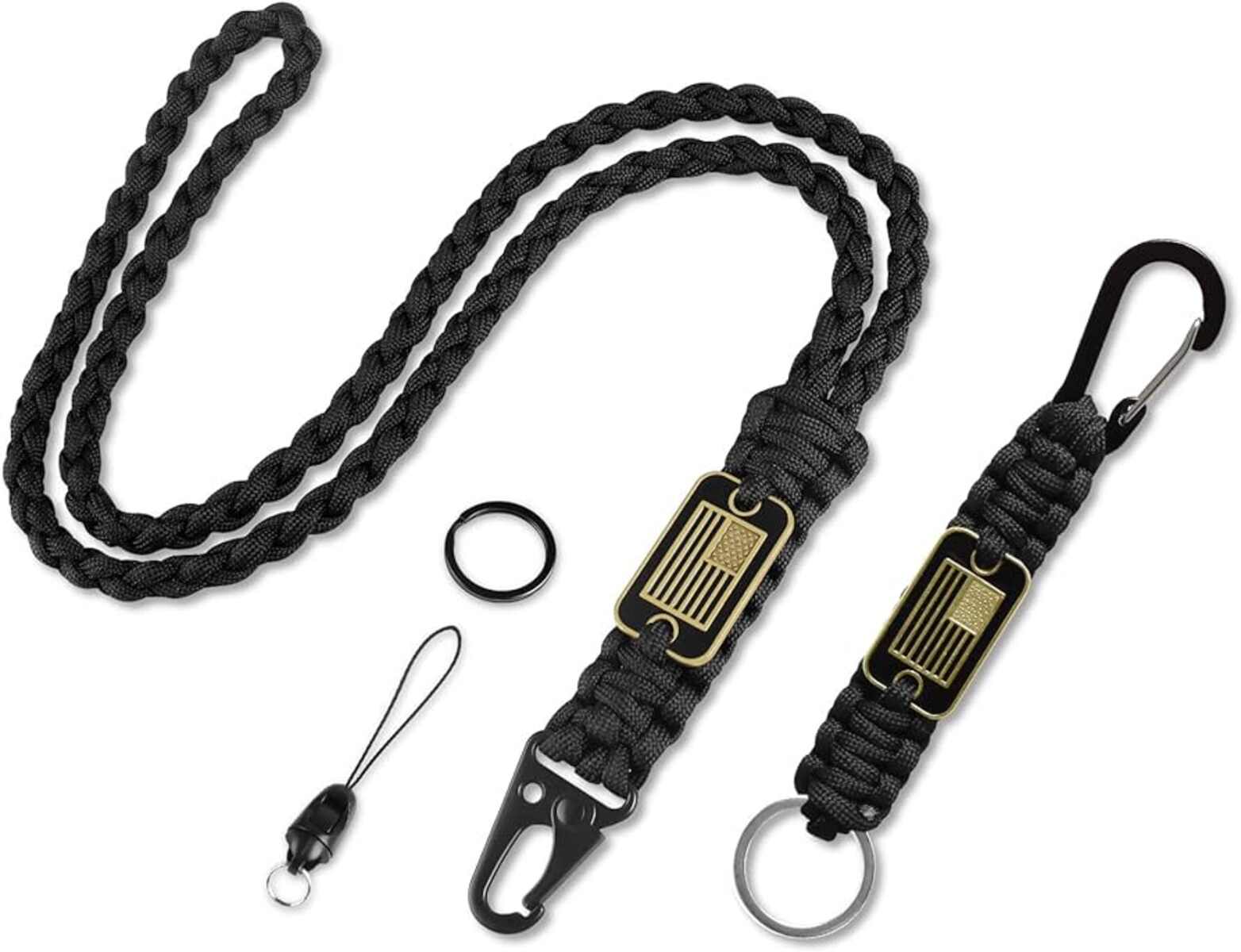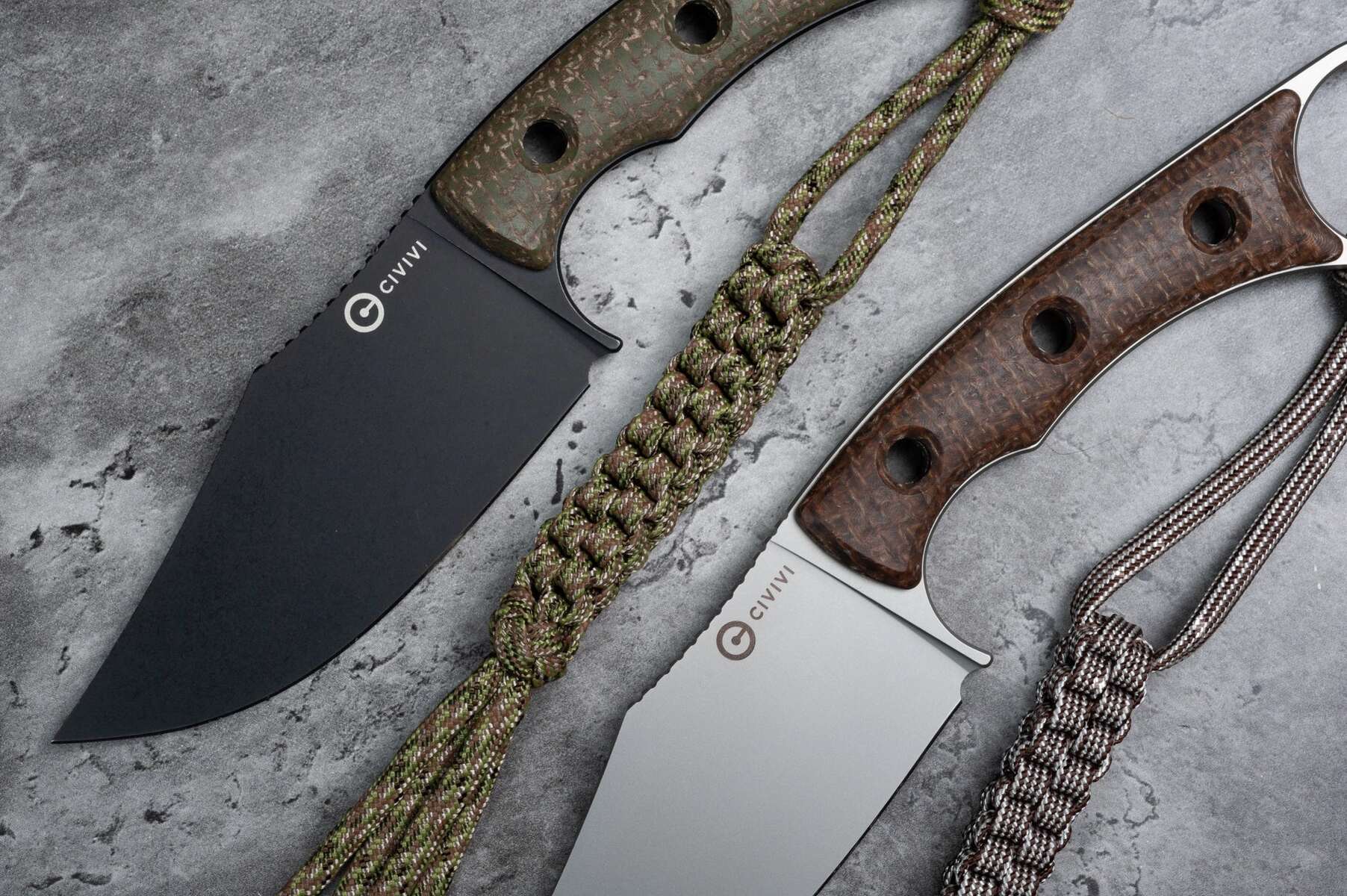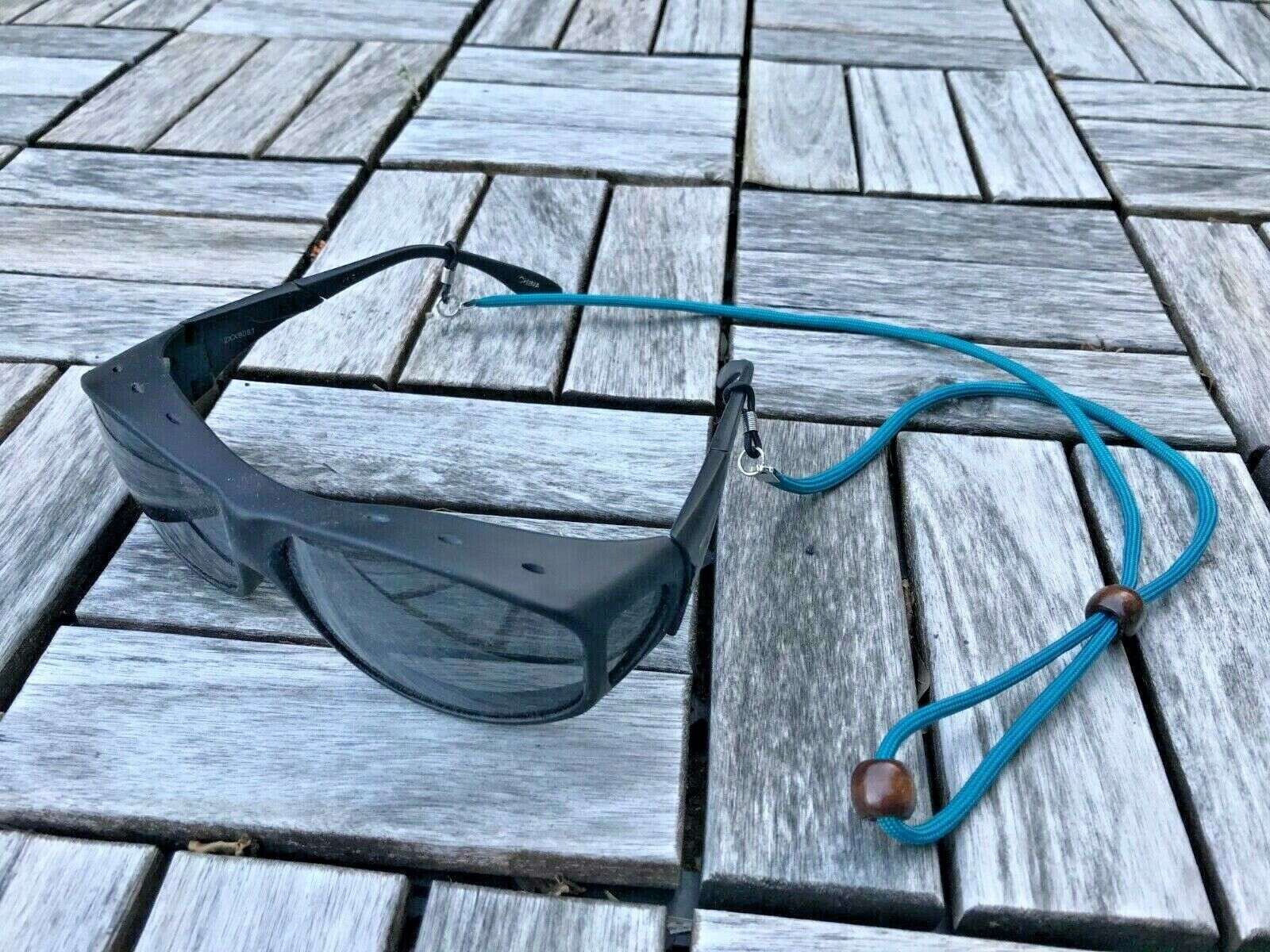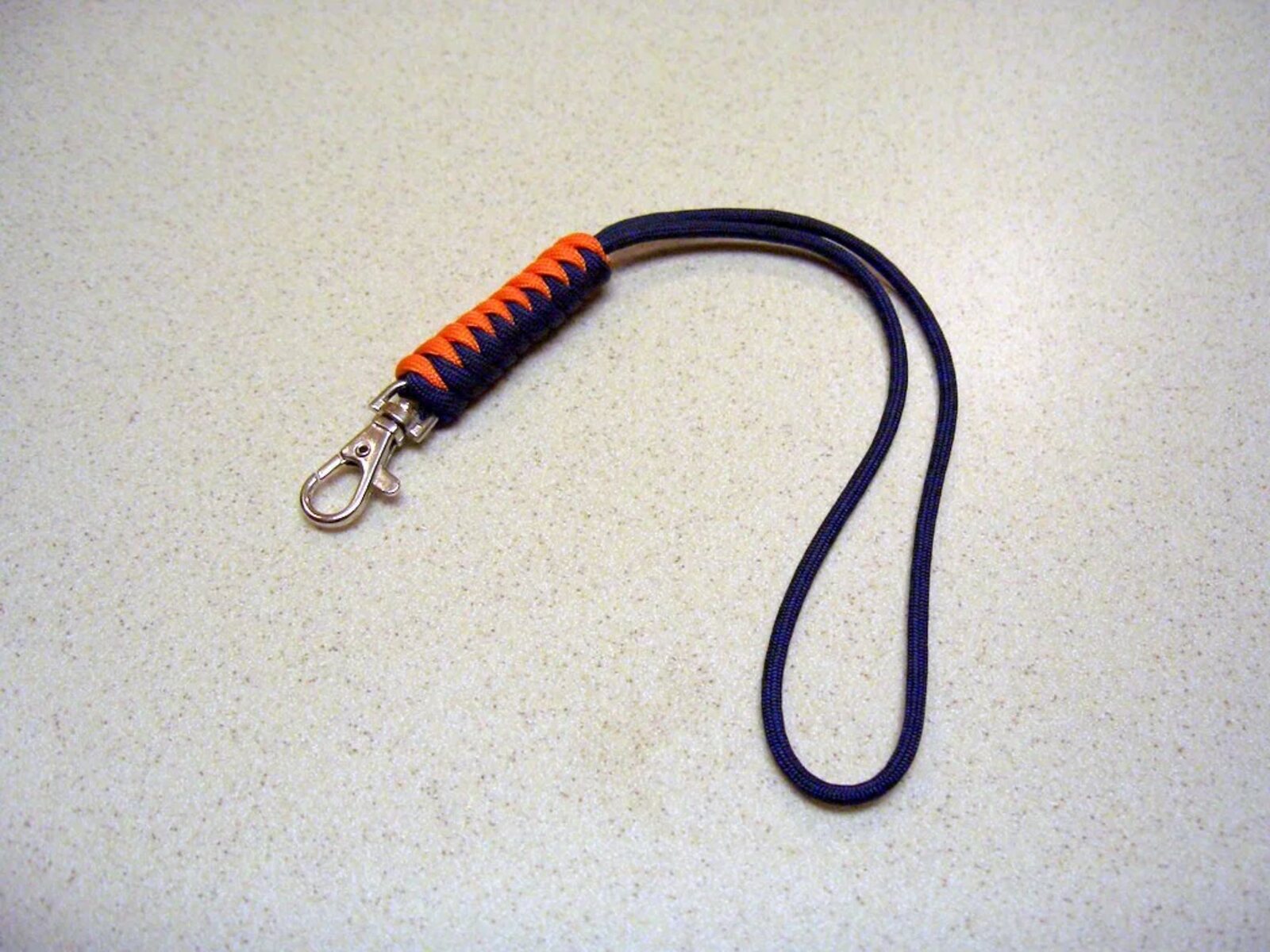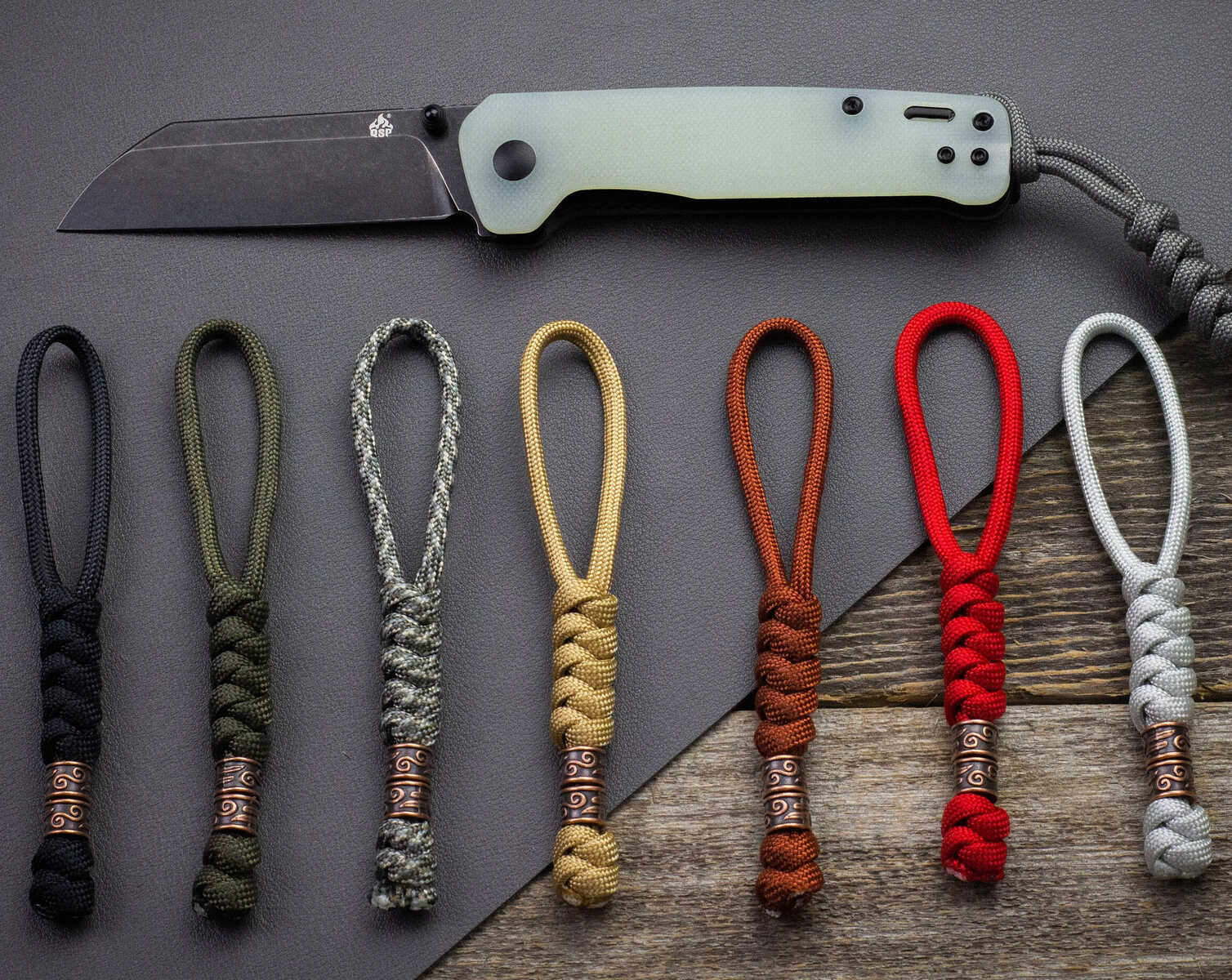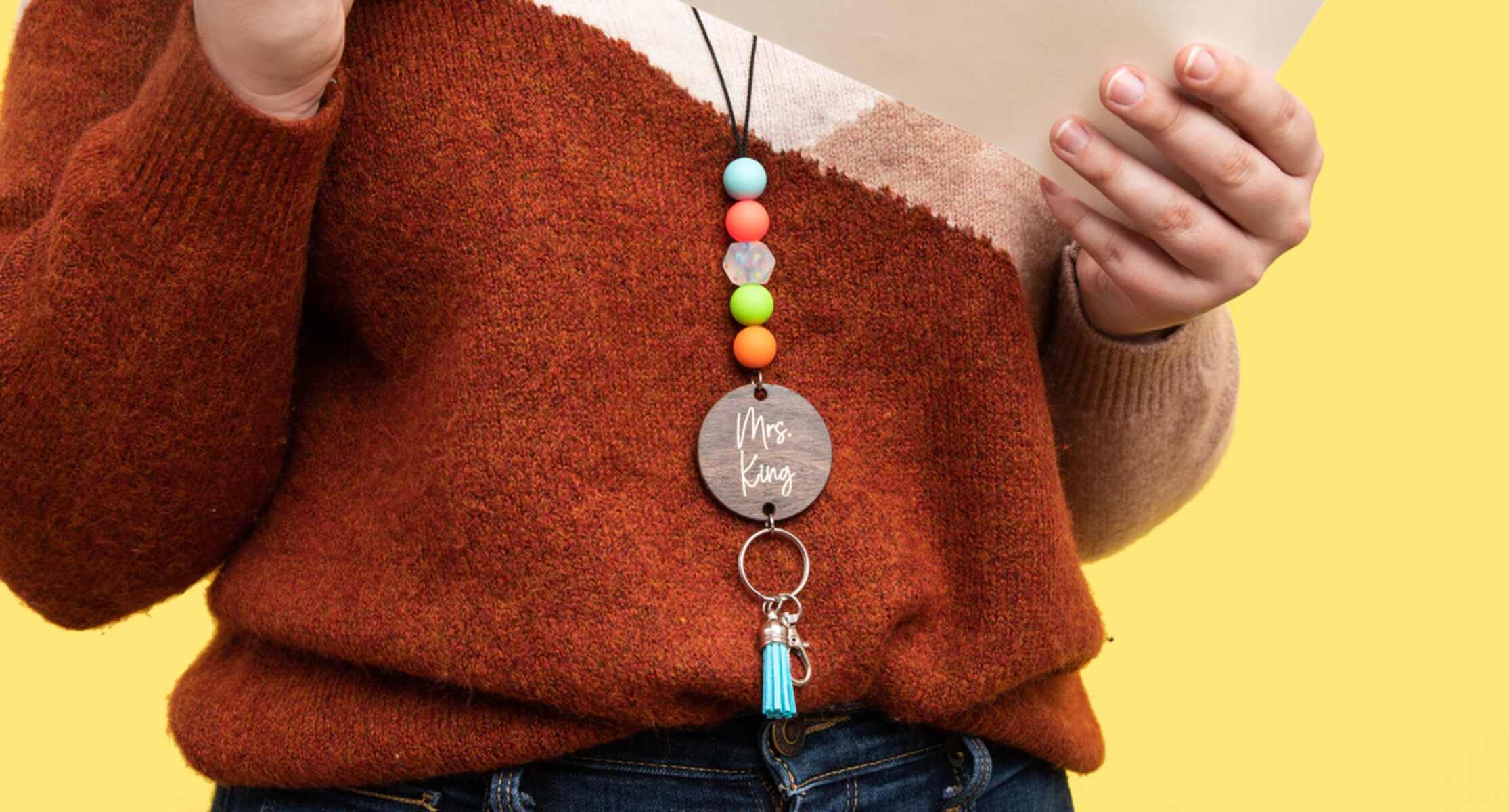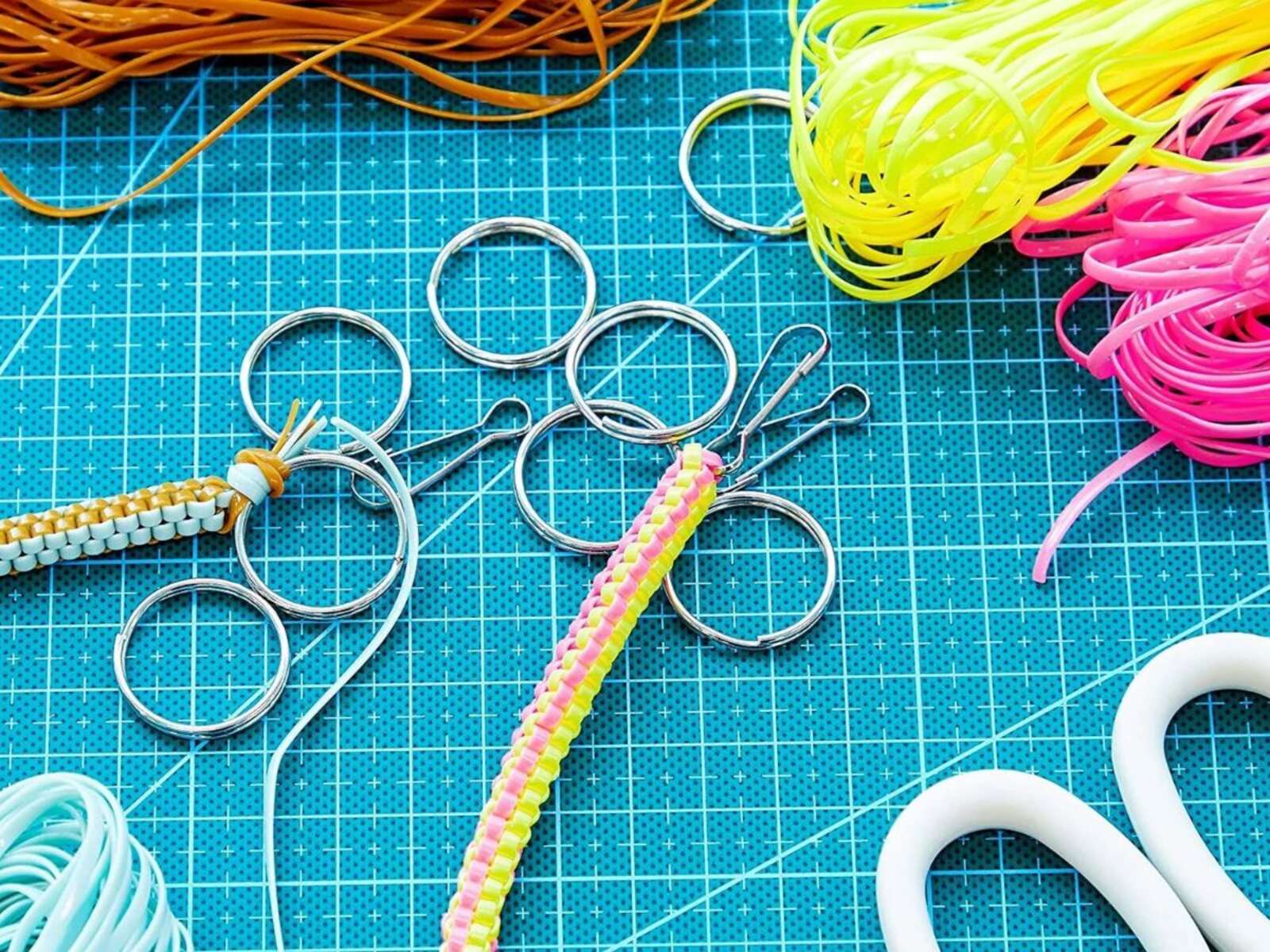Introduction
Paracord lanyards are not just practical accessories; they are a statement of durability and versatility. Crafting durable lanyards with paracord is a rewarding and creative endeavor that allows you to customize your gear with a touch of personal flair. Whether you're an outdoor enthusiast, a survivalist, or simply someone who appreciates well-crafted items, paracord lanyards are a valuable addition to your everyday carry.
The art of creating paracord lanyards has gained popularity due to the exceptional strength and reliability of paracord. It's no wonder that this versatile material has found its way into the crafting community, offering a wide range of possibilities for creating functional and aesthetically pleasing lanyards.
In this comprehensive guide, we will delve into the world of paracord lanyards, exploring the benefits of using paracord, the process of crafting durable lanyards, and essential tips for maintaining and caring for your creations. Whether you're a seasoned paracord enthusiast or a newcomer to the craft, this guide will equip you with the knowledge and inspiration to embark on your lanyard-making journey.
From selecting the right type of paracord to mastering essential knots and weaving techniques, this guide will walk you through the step-by-step process of creating lanyards that are not only visually appealing but also built to withstand the demands of everyday use. So, gather your tools and let's embark on a journey to master the art of crafting durable lanyards with paracord.
What is Paracord?
Paracord, short for parachute cord, is a lightweight, nylon kernmantle rope that was originally used in the suspension lines of parachutes during World War II. Over the years, it has evolved into a multipurpose utility cord with a wide range of applications. The versatility and durability of paracord make it an indispensable tool for outdoor enthusiasts, survivalists, crafters, and everyday users alike.
The typical construction of paracord consists of a braided outer sheath and an inner core. The inner strands provide strength and support, while the outer sheath offers protection and durability. This unique composition contributes to the remarkable strength-to-weight ratio that paracord is renowned for. In addition to its strength, paracord is known for its quick-drying properties, resistance to mildew, and ability to withstand various weather conditions, making it an ideal choice for outdoor and survival applications.
Paracord comes in various thicknesses, typically measured by the number of inner strands it contains. The most common types include 550 paracord, which features seven inner strands, and 750 paracord, which contains eleven inner strands. The number designation, such as "550" or "750," signifies the minimum breaking strength of the cord in pounds. This rating system provides users with a clear understanding of the cord's load-bearing capacity, allowing for informed decision-making when selecting the appropriate type of paracord for different projects.
In addition to its practical uses, paracord has gained popularity in the crafting community, inspiring a wide array of creative projects, including bracelets, lanyards, keychains, and decorative knots. The vibrant color options and the ability to combine multiple strands for unique patterns have made paracord a favorite material for crafting aesthetically pleasing and functional items.
Whether it's for outdoor survival, crafting, or everyday utility, paracord has proven to be a versatile and reliable cordage that continues to capture the imagination of enthusiasts across various disciplines. Its strength, flexibility, and adaptability make it an essential tool in numerous scenarios, earning its reputation as a go-to cord for both practical and creative endeavors.
Benefits of Using Paracord for Lanyards
Crafting lanyards with paracord offers a myriad of benefits, making it an ideal choice for individuals seeking durable and versatile accessories. The unique properties of paracord contribute to the functionality and aesthetic appeal of lanyards, enhancing their utility in various settings. Here are the key benefits of using paracord for crafting lanyards:
-
Exceptional Strength: Paracord is renowned for its exceptional tensile strength, making it highly reliable for crafting lanyards that can withstand daily wear and tear. Whether used for securing keys, ID badges, or outdoor gear, paracord lanyards offer peace of mind, knowing that they can handle the demands of everyday use without compromising on durability.
-
Versatility: Paracord lanyards can be customized to suit individual preferences, offering a wide range of design options, color combinations, and weaving techniques. The versatility of paracord allows for the creation of lanyards that not only serve a practical purpose but also reflect personal style, making them a unique and functional accessory.
-
Outdoor Readiness: For outdoor enthusiasts, paracord lanyards provide an added layer of preparedness. The inherent weather-resistant properties of paracord make these lanyards suitable for outdoor activities, ensuring that essential items remain secure and easily accessible in various environmental conditions.
-
Emergency Utility: Beyond their everyday use, paracord lanyards can serve as a valuable emergency resource. In survival situations, the inner strands of paracord can be unraveled and utilized for tasks such as constructing shelters, creating makeshift repairs, or even fashioning emergency tourniquets, highlighting the practicality and multi-functionality of paracord lanyards.
-
Customizability and Personalization: Crafting lanyards with paracord allows for endless customization possibilities. Whether incorporating beads, charms, or intricate knotting patterns, paracord lanyards offer a canvas for personal expression, enabling individuals to tailor their lanyards to reflect their unique preferences and interests.
-
Longevity: Paracord lanyards are built to last, retaining their strength and integrity over time. By utilizing high-quality paracord and employing proper crafting techniques, lanyards can withstand prolonged use, ensuring that they remain reliable accessories for the long haul.
In summary, the benefits of using paracord for crafting lanyards extend far beyond mere functionality. From strength and versatility to emergency utility and personalization, paracord lanyards embody a fusion of practicality and creativity, making them a compelling choice for individuals seeking durable, customizable, and resilient accessories.
Choosing the Right Type of Paracord
Selecting the right type of paracord is a crucial step in crafting durable lanyards that meet your specific needs and preferences. With a variety of options available, understanding the key factors to consider when choosing paracord will ensure that your lanyards are not only visually appealing but also built to withstand the rigors of everyday use.
Tensile Strength and Load-Bearing Capacity
One of the primary considerations when choosing paracord for lanyards is the tensile strength and load-bearing capacity. The most common type of paracord, known as 550 paracord, has a minimum breaking strength of 550 pounds, making it suitable for a wide range of applications. However, for lanyards intended for heavier items or outdoor use, opting for a higher-rated paracord, such as 750 paracord with a minimum breaking strength of 750 pounds, may provide added peace of mind and durability.
Color and Aesthetic Appeal
Paracord is available in a spectrum of vibrant colors and patterns, allowing for endless possibilities in customizing lanyards to match personal style and preferences. Whether you prefer a single solid color, a camouflage pattern for outdoor use, or a combination of colors for a visually striking design, the aesthetic appeal of paracord lanyards adds a touch of individuality to your everyday carry.
Inner Strand Count and Versatility
While 550 paracord is the most widely used type for crafting lanyards, it's worth noting that paracord with a higher inner strand count, such as 750 paracord, offers increased versatility. The additional inner strands can be unraveled and utilized for various tasks, making it a practical choice for individuals who value the multi-functionality of their lanyards beyond mere accessory use.
Weather Resistance and Outdoor Application
For outdoor enthusiasts or individuals seeking lanyards for outdoor activities, considering the weather resistance and outdoor application of the paracord is essential. Opting for paracord with UV resistance and quick-drying properties ensures that lanyards remain reliable and functional in diverse environmental conditions, making them an indispensable addition to outdoor gear.
Project-Specific Requirements
Ultimately, the choice of paracord for lanyards should align with the specific requirements of your projects. Whether it's for everyday carry, outdoor adventures, or crafting personalized gifts, understanding the intended use and environmental factors will guide you in selecting the right type of paracord that best suits your needs.
By considering these factors and understanding the diverse options available, you can confidently choose the right type of paracord to embark on crafting durable lanyards that not only showcase your personal style but also embody the strength and resilience synonymous with paracord.
Tools and Materials Needed
Crafting durable lanyards with paracord requires a set of essential tools and materials to facilitate the weaving process and ensure the creation of reliable and visually appealing accessories. Whether you're a seasoned paracord enthusiast or a newcomer to the craft, having the right tools at your disposal is crucial for achieving successful lanyard creations. Here's a comprehensive list of the tools and materials needed to embark on your paracord lanyard-making journey:
Paracord:
The primary material for crafting paracord lanyards is, of course, paracord itself. Selecting high-quality paracord in the desired color and type, such as 550 or 750 paracord, forms the foundation of your lanyard project. Ensure that the paracord chosen aligns with the intended use and aesthetic preferences for the lanyards.
Scissors or Cutting Tool:
A sharp pair of scissors or a cutting tool is essential for trimming the paracord to the desired length. Precision cutting ensures neat and clean ends, contributing to the overall professional finish of the lanyards.
Lighter or Heat Source:
To prevent fraying and secure the ends of the paracord, a lighter or heat source is indispensable. The application of heat to the cut ends of the paracord melts the nylon fibers, effectively sealing them and preventing unravelling.
Ruler or Measuring Tape:
Accurate measurements are crucial for achieving consistency in the length of the lanyards. A ruler or measuring tape allows for precise sizing, ensuring that the finished lanyards meet the desired dimensions.
Buckles or Fasteners (Optional):
Depending on the lanyard design, buckles or fasteners may be used to enhance functionality and ease of use. These components provide attachment points for keys, ID badges, or other items, adding practicality to the lanyard construction.
Optional Embellishments:
For those seeking to personalize their lanyards, optional embellishments such as beads, charms, or decorative knots can be incorporated. These embellishments add a touch of individuality and creativity to the lanyards, allowing for unique customization.
Work Surface:
A flat and stable work surface provides a conducive environment for weaving and assembling the lanyards. Whether it's a dedicated crafting table or a cleared section of a desk, a suitable work surface ensures comfort and ease during the crafting process.
Optional Clamps or Cord Organizers:
Clamps or cord organizers can be used to secure the paracord during weaving, particularly for intricate patterns or longer lanyards. These tools help maintain tension and organization, streamlining the weaving process.
Crafting Guides or Tutorials (Optional):
For beginners or those exploring new weaving techniques, crafting guides or tutorials can serve as valuable resources. These references provide step-by-step instructions and visual aids, aiding in the mastery of various weaving patterns and knotting techniques.
By gathering these essential tools and materials, you are well-equipped to embark on the journey of crafting durable lanyards with paracord. With attention to detail and a focus on precision, these tools will support you in creating lanyards that embody strength, functionality, and personalized style.
Step-by-Step Guide to Crafting a Durable Lanyard
Crafting a durable lanyard with paracord is a rewarding and creative process that allows you to showcase your craftsmanship while creating a functional accessory. The step-by-step guide below will walk you through the process of weaving a paracord lanyard, providing detailed instructions to help you craft a durable and visually appealing accessory.
Step 1: Gather Materials and Prepare Workspace
Begin by gathering the necessary materials, including paracord, scissors, a lighter, and any optional embellishments or fasteners. Clear a suitable work surface and ensure that all tools are within reach, creating an organized and conducive workspace for the crafting process.
Step 2: Measure and Cut Paracord
Determine the desired length for your lanyard and carefully measure and cut the paracord to the appropriate size. For a standard lanyard, a length of approximately 3 feet of paracord is commonly used, but this can be adjusted based on individual preferences and intended use.
Step 3: Seal the Ends
Using a lighter, carefully melt the cut ends of the paracord to prevent fraying. Apply heat to the ends, allowing the nylon fibers to melt and fuse together, creating a neat and secure finish.
Step 4: Begin Weaving
Fold the length of paracord in half to form a loop at one end. This loop will serve as the attachment point for keys or other items. With the loop at the top, begin weaving the paracord using the desired knotting technique, such as the cobra knot or king cobra knot, to create the body of the lanyard.
Step 5: Incorporate Optional Embellishments
If desired, incorporate optional embellishments such as beads or charms into the weaving process to add a personalized touch to the lanyard. These embellishments can be strategically placed within the weave to enhance the visual appeal of the lanyard.
Step 6: Complete the Weaving
Continue weaving the paracord until you reach the desired length for the lanyard. Once the weaving is complete, secure the ends of the paracord and trim any excess length, ensuring a clean and professional finish.
Step 7: Attach Fasteners (Optional)
If using buckles or fasteners, attach them to the ends of the lanyard to create a secure closure and provide a convenient attachment point for keys or ID badges.
Step 8: Final Inspection and Adjustments
Inspect the lanyard for any loose knots or imperfections, making any necessary adjustments to ensure that the lanyard is well-crafted and durable. Test the functionality of any attached fasteners to ensure a secure closure.
By following these step-by-step instructions, you can confidently craft a durable paracord lanyard that embodies strength, functionality, and personalized style. Whether for personal use or as a thoughtful gift, the process of weaving a paracord lanyard is a fulfilling endeavor that allows you to showcase your creativity and craftsmanship.
Tips for Maintaining and Caring for Paracord Lanyards
Proper maintenance and care are essential for ensuring the longevity and optimal performance of paracord lanyards. By implementing the following tips, you can preserve the integrity of your lanyards and keep them in top condition for long-term use.
-
Regular Cleaning: Periodically clean your paracord lanyards to remove dirt, debris, and sweat accumulation. Use a mild soap or detergent and lukewarm water to gently scrub the lanyards, paying attention to woven areas and fasteners. After cleaning, thoroughly rinse the lanyards and allow them to air dry completely before use.
-
Avoid Excessive Friction: Minimize exposure to excessive friction or abrasive surfaces that can cause premature wear and tear. Be mindful of rubbing the lanyards against rough surfaces, as this can lead to fraying or damage to the woven structure.
-
Inspect for Wear and Damage: Regularly inspect your paracord lanyards for signs of wear, loose knots, or damaged sections. Address any issues promptly by retying knots, trimming frayed ends, or repairing damaged areas to prevent further deterioration.
-
Storage Considerations: When not in use, store your paracord lanyards in a clean and dry environment. Avoid prolonged exposure to direct sunlight, as UV rays can weaken the nylon fibers over time. Coiling the lanyards neatly and storing them in a protective pouch or container can help prevent tangling and maintain their condition.
-
Avoid Chemical Exposure: Keep paracord lanyards away from harsh chemicals, solvents, and strong detergents, as these substances can degrade the nylon material and compromise its strength. If accidental exposure occurs, promptly rinse the lanyards with water and mild soap to remove any chemical residue.
-
Retain Original Shape: To maintain the original shape and structure of the lanyards, avoid excessive stretching or pulling. While paracord is known for its flexibility, subjecting it to constant tension beyond its limits can lead to deformation and reduced strength.
-
Reinforce High-Stress Areas: For lanyards used to carry heavy items or subjected to frequent pulling, consider reinforcing high-stress areas with additional weaving or knots. This proactive measure can enhance the durability of the lanyards and prevent premature wear in critical sections.
By incorporating these maintenance and care tips into your routine, you can prolong the lifespan of your paracord lanyards and ensure that they remain reliable and visually appealing over time. With proper care, your lanyards will continue to serve their intended purpose, whether as everyday carry accessories, outdoor gear attachments, or personalized gifts.
Conclusion
In conclusion, the art of crafting durable lanyards with paracord is a testament to the fusion of functionality, creativity, and resilience. Through the utilization of paracord, a versatile and robust nylon cordage, individuals have the opportunity to create personalized accessories that not only serve practical purposes but also reflect individual style and craftsmanship. The process of weaving paracord lanyards encompasses a blend of traditional knotting techniques, modern design elements, and a commitment to durability, resulting in accessories that are built to withstand the rigors of everyday use.
The benefits of using paracord for crafting lanyards extend beyond mere utility. The exceptional strength, versatility, and outdoor readiness of paracord lanyards make them valuable additions to everyday carry, outdoor gear, and emergency preparedness kits. Furthermore, the customizability and personalization offered by paracord lanyards allow individuals to express their unique preferences and interests, transforming these accessories into statements of individuality and practicality.
As demonstrated in the step-by-step guide, the process of crafting paracord lanyards involves meticulous attention to detail, precise knotting, and the integration of optional embellishments. This hands-on approach not only fosters a sense of accomplishment but also enables individuals to tailor their lanyards to meet specific needs and aesthetic preferences. Whether used for securing keys, ID badges, or outdoor gear, paracord lanyards stand as reliable companions, ready to endure the demands of daily life and unexpected challenges.
The maintenance and care tips provided serve as a guide for preserving the longevity and performance of paracord lanyards, emphasizing the importance of regular upkeep to ensure continued functionality and visual appeal. By implementing these guidelines, individuals can extend the lifespan of their lanyards, allowing them to remain steadfast companions in various settings and activities.
In essence, the journey of crafting durable lanyards with paracord transcends the realm of practical accessories, delving into the realm of self-expression, preparedness, and craftsmanship. Whether for personal use, gifting, or outdoor adventures, paracord lanyards embody the enduring qualities of strength, versatility, and individuality, making them a compelling choice for those seeking accessories that seamlessly blend utility with personal style.







